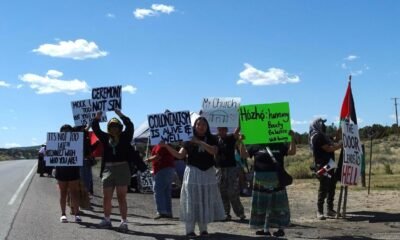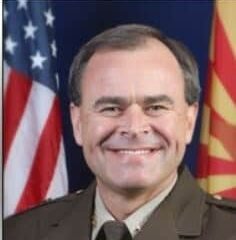arizona
Call for Reform Following Election Day Turmoil in Navajo Nation County

On November 5, Navajo voters faced significant challenges during the election in Apache County, Arizona. Many experienced difficulties with verifying their signatures after casting ballots. In response, the Navajo Nation Department of Justice initiated two lawsuits and conducted public hearings to address these issues.
The first lawsuit, filed on Election Day, aimed to extend voting hours by two hours due to multiple issues, including malfunctioning ballot printers and long lines at polling places. The request was granted, keeping nine polling locations open until 9 p.m. The affected sites included Canyon De Chelly, Chinle, and Fort Defiance.
Navajo Nation Council Delegate Andy Nez recounted his experience while voting in Fort Defiance. After casting his vote in tribal elections, he observed long lines of up to 45 minutes for the general election. A breakfast conversation revealed that some voters felt their votes might not have been counted properly.
Nez also communicated with voters about the wait times and weather conditions. By 2:30 p.m., new voting machines were brought in to alleviate the backlog. He dedicated time to assist voters in line, providing coffee as temperatures hovered in the mid-40s.
“The issues became apparent very early in the day and persisted,” Nez stated, highlighting that significant lines remained even until closing time.
Teaira Francis, another Navajo voter, encountered various obstacles, including malfunctioning printers and shortages of supplies. As a student at Navajo Technical University, she assisted with voter outreach earlier in the day. She witnessed an elderly voter nearly fall due to poor conditions at the polling place.
Later, while waiting about an hour to vote in Chinle around 6:30 p.m., Francis pointed out the lack of restroom facilities and seating for the elderly. Additionally, language barriers complicated the process, particularly for older Navajo speakers.
Some voters resorted to returning to their vehicles for warmth, risking their place in line. Francis recounted a tense situation where a non-local election official yelled at confused voters, further heightening tensions.
The polling location structure also caused confusion, with voters unsure of their designated precincts. Francis noted that even her husband’s mail-in ballot listed the wrong precinct despite his history of voting in Chinle.
“My experience has fueled my desire to participate in future elections, but for those less knowledgeable, this could deter them from returning to vote,” she shared.
In light of these issues, Nez recommended that the Navajo Election Administration consider larger venues for polling and translate materials for Navajo-speaking voters. He emphasized the need for proper planning to ensure all community members have the opportunity to vote efficiently.
The second lawsuit filed by the Navajo Nation Department of Justice on November 12 sought to provide additional time for voters to resolve signature discrepancies. This was prompted by a ruling from the Arizona Supreme Court against extending the curing period statewide. The process, known as ballot curing, allows voters to correct issues with their mail-in ballots.
Approximately 175 voters faced a tight timeline to rectify their signatures, hampered by poor cell service and the rural distances to the Apache County Recorder’s Office. Unfortunately, the lawsuit was dismissed on November 22, with the judge concluding that Apache County had made reasonable efforts to contact affected voters.
Navajo Nation President Buu Nygren expressed disappointment, asserting that Apache County had disenfranchised Navajo voters. Meanwhile, other stakeholders began discussing strategies to address these systemic issues, with Arizona Native Vote stepping in to assist voters with signature cures amidst ongoing difficulties.
Jaynie Parrish, executive director of Arizona Native Vote, highlighted the complications in the ballot curing process, noting the lack of contact information on the ballots. She described challenges in locating voters needing assistance and indicated that quick communication is crucial in these time-sensitive situations.
“Voting should not be this hard,” Parrish remarked. She criticized the increasingly complex guidelines and policies that create barriers for voters, particularly within the Native community.


















